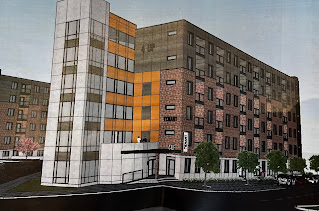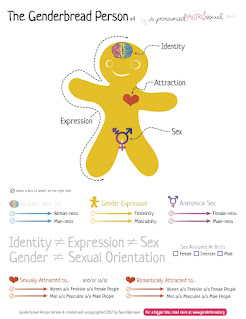It's too tall.
The proposed Chauncey Annex rezoning described in Ordinance #46-2025 is too tall.
The APC describes building heights in "Block 21" of the West
Lafayette Downtown Plan as anywhere from 3 to 10 stories.
Which would make this 15 story proposal somewhere between 5 and 12
stories too tall.
That's a lot.
I was surprised to see that this proposal in its current form made
it onto the November 3rd. council agenda.
I would have thought that someone early on would have made clear
to the developer and their attorney that this proposal was not to
plan. That such a massing of buildings on State St. was not
acceptable. That given the history of the controversies around
downtown development the City Council was unlikely to pass such a
proposal. That we have learned there is always some other project
which will follow this.
Most of you will be familiar with the story. Purdue changed its
business model and West Lafayette was blindsided. (It was not all
that long ago that Director of Develpoment Chandler Poole was
walking what was then "The Village" plotting a revival of its
history.)
So, Nick Deboer, sitting in what is now Nick Schenkel's chair,
would yell "the rents are too (damn) high". He argued that we
needed to build as many commercial dormitories as big as we can as
quickly as we can. Then I would argue, sitting for eight years in
what is now Larry Leverenz's chair, that this place has little or
no character and we ought to preserve what we have.
There was a compromise inside the Democratic caucus and with the
Mayor as the State Street Project unfolded.
We would "go ugly early" south of State Street. Build "Trump
Tower" if needed; just as long as Purdue's student pilots won't
hit it! Perhaps we would get lucky; preserve Tommy Johnston Park
and then finagle some other green space.
North of Fowler, we would work to preserve a multi-generational
near campus residential neighborhood.
BETWEEN STATE AND FOWLER THE BUILDINGS WOULD STEP DOWN.
The transition would allow for the Sullivan bank, Morton School,
old fire station #1 and the new library to be seen. A festival
space could be imagined. We would have an architectural buffer
between the two residential scales. I would argue that is still
desirable.
Let me also remind the council that it has shortened buildings
before. The developer does have the ability to reduce the
height and modify density.
Does anyone remember "Boiler Cribs"? It was set to tower over
Mackey Arena on Northwestern Ave. Nobody liked that idea. It would
be downsized and become The Fuse. The Muinzer Building at the
corner of Northwestern and State was to loom over the Miller Building.
It got smaller. A large apartment project was proposed for the
corner of Northwestern (Allen St.) and West Stadium. It never
happened.
You also need to be alert to the fact that developers in every
generation find some blandishment that would allow them to proceed
without changing the scale of their project.
First there was the promise of some incredible ground floor
retail. Then the thought was that some new construction might not
be just another student dormitory, but rather up-scale apartments
for the elusive young urban professionals. Most recently high
rises would be built with apartments "below market value." Now we
have "below market value's" cousin, the appealing promise of
"affordable housing".
These are not philanthropies. So it will important to determine
what index is being used, which federal programs might be
involved, and what state and local incentives are anticipated to
make the rent controls profitable and durable. Unless "affordable
housing" means only what the developer determines to be "below
market value."
Mayor Easter is certainly correct to note
that building size and "affordable housing" are separate issues.
One ought not to be used to extort the other.
Finally, there is also the matter of the city's reputation
regarding zoning/planning. It took a hit when one administration's
SK Hynix site "a" suddenly lost favor with the next
administration. Is the city reliable when it comes to urban
planning?
This zoning change will be back before the council in December.
It will still be too tall.



.jpg)

















